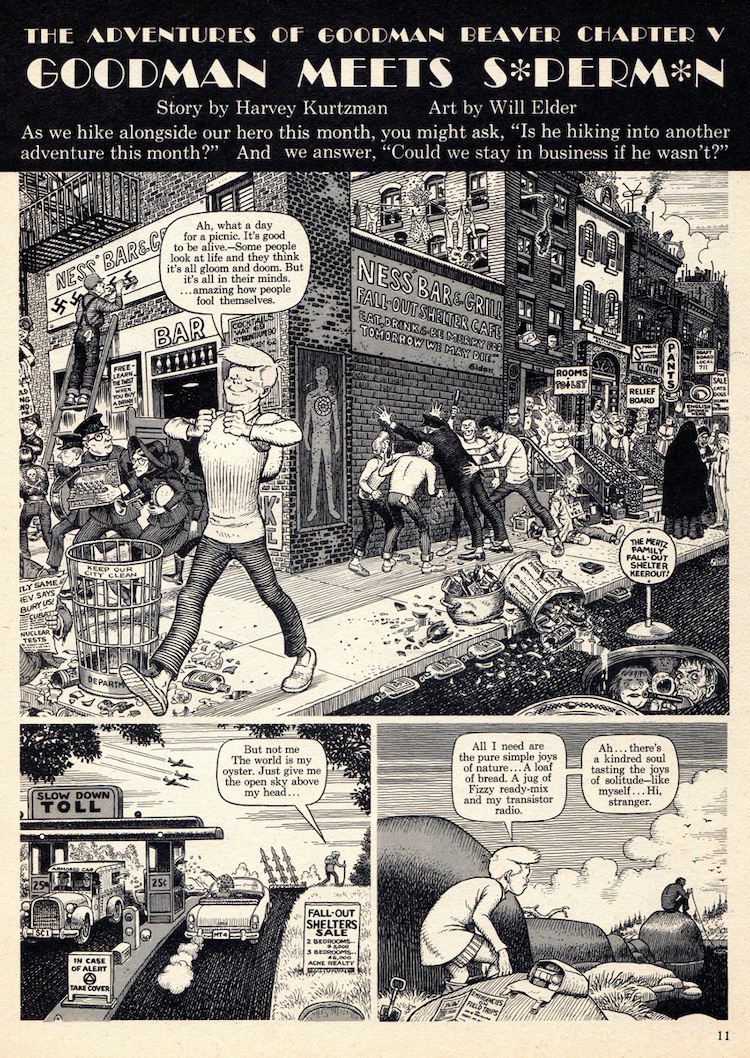RAW was built around a core of cartoonists that included a new generation of technical virtuosos intent on producing discomfort in the reader (Mark Bayer, Charles Burns, Sue Coe, Drew Friedman, Kaz, Mark Newgarden and Gary Panter); the very best of the previous decades still-kicking undergrounders (R. Crumb, Kim Deitch, Justin Green and Griffith and Spiegelman); and an impeccably selected cross section of modern European cartoonists (Doury, Loustal, Mariscal, Masse, Mattotti, Meulen, Munoz / Sampayo, Swarte and Tardi). Add in the editors' serious and painstaking but prankish approach to magazine production (issues included bubblegum cards, deliberately ripped covers, and a set of X-rated bits "censored" from a story), RAW became an art object as well as superlative reading experience.
After eight self-published tabloid-size issues in seven years, Spiegelman and Mouly re-launched RAW as a Penguin paperback. Even though this second "volume" was designed in a more mainstream friendly format, there were no creative concessions; in fact, by making impossible the graphic indulgences of the tabloid-size editions, the "new" RAW handily rendered moot the most frequent criticism - that its emphasis on design overshadowed narrative. Unfortunately Spiegelman and Mouly called it quits after three issues. At the time, RAW had become so infrequent (those three Penguin editions took six years to produce) that its disappearance didn't carry a sting - more like a long slow, creeping disappointment as the '90s continued on with no new releases. But by that time, RAW had launched so many careers, defined (and in some cases exhausted) so many trends, and opened so many possibilities that its job had arguably been done.
(And then there was that Maus serial, too...)
Cultural Daily: Art Spiegelman & RAW - His Other Masterpiece
Eye Magazine: Comics for Damed Intellectuals










